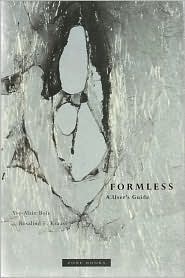
The list of phobias is rather extensive and exhaustive, ranging from the fear of sitting down (kathisophobia) to the fear of relatives (syngenesophobia). A lot of phobias probably seem a little ridiculous (like the ones I mentioned), but the title phobia of
David Batchelor's book,
Chromophobia, is a fear that afflicts more people than you would think.
By definition, chromophobia is the fear of colors. In a series of essays, Batchelor explores Western culture's aesthetic propensity in avoiding the use of color, a trend that he disagrees with, evinced by book's brightly colored cover. Batchelor is thoughtful in his argument, drawing references from
Herman Melville's "great white whale," Le Corbusier's architecture, and galleries' use of white space, among others.
Well-written and concise, Chromophobia is a fun delve into art theory.






